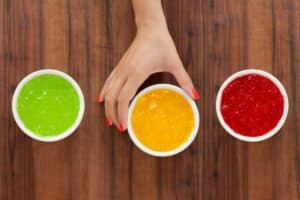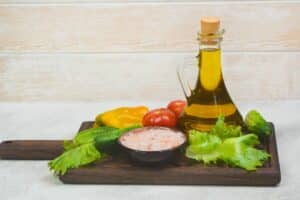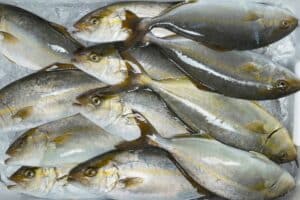Have you ever heard of Ube? No? Well, Ube is a very popular Filipino dessert ingredient and snack ingredient. It recently gained quite a lot of attention and popularity in the US. It is a purple yam that is versatile, sweet, and full of flavor.
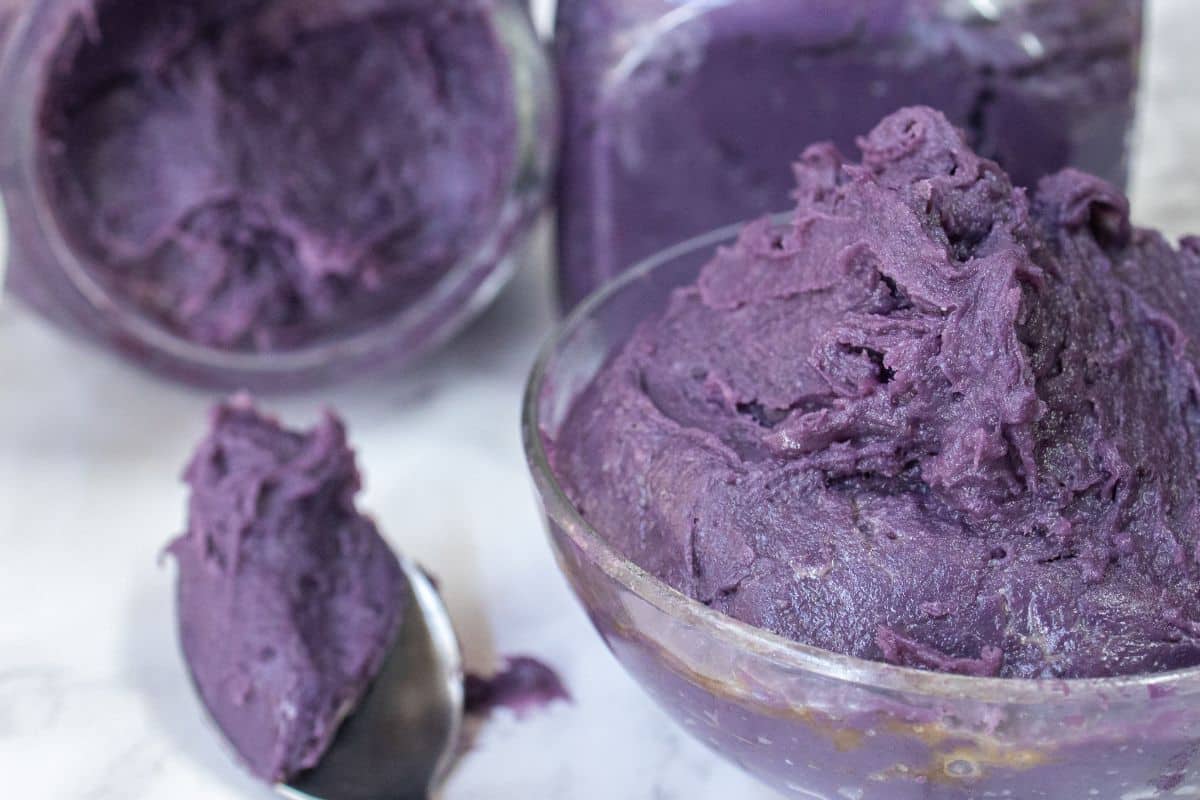
You can easily use it to make ice cream, cakes, and even some savory dishes. Let’s take the time to take a look at exactly what Ube is, how you can use it, and find out where it comes from.
So, if you have any burning questions about Ube, stick around, and we will tell you all you need to know.
Ube: What Is It?
Ube is a type of purple yam that is grown in tropical climates found in Southeast Asia. Ube has a mild flavor but has some subtle notes of vanilla and pistachio.
The color of Ube tends to range from a light, lavender-like color to deep violet, however, this tends to vary depending on the variety. However, all types of Ube will have a hue that is a vibrant purple when they are cooked.
The texture of Ube when cooked will range from firm to creamy. In many ways, it has been compared to sweet potato purée or mashed potatoes! In Filipino cuisine, it is very often used as an ingredient in cakes, ice cream, and other desserts.
However, it is also enjoyed as a side dish, or can be eaten as part of a savory dish, like doughnuts, or even pancakes!
Ube: Where It Comes From?
Ube is found native to Southeast Asia, but it is mostly found in Indonesia and the Philippines. It is a plant that grows its best in warm climates, but it does need a great deal of sunlight to thrive.
This means that the yam is very well suited to grow in the tropical regions of Southeast Asia. Ube itself, looks a lot like most other yams found across the globe, but its most distinguishable feature is that it has a vivid purple hue to it when it is cooked.
In recent years, Ube has found itself to have gained more popularity in the US. This increase in popularity is mostly thanks to its unique flavor and how versatile it is. A majority of restaurants now offer many dishes that make use of Ube in their menus.
Ube pancakes are very popular, however, doughnuts with an Ube glaze have also become popular. It is also possible to find packaged versions of Ube that are sold online, you may also be able to get these at specialty grocery stores across the US, just make sure to keep an eye open for them!
What Is The Taste Of Ube?
How can we explain the taste of Ube? Well, this is a delicious root vegetable, which luckily has a few similarities to other foods. So, let’s take a look at its similarities, then you will know what to expect when you pick one up from the store!
Fresh Ube has quite a unique flavor. It is sweet, earthy, and quite nutty. The sweetness is not quite as powerful as sugar, but it is enough to give any dessert or snack a sweet undertone, without overpowering it with sweetness.
You could compare Ube to taro root, regarding its flavor and its texture. That being said, taro root is often not as rich as Ube is, due to it having a lower fat content.
Another similarity can be found in purple sweet potatoes, which are also often known as Okinawan potatoes. These have a similar color and an earthy sweetness to Ube, however, they are a bit sweeter, and they have a less nutty flavor.
Ube Vs Taro Vs Purple Sweet Potatoes
Now that we know what the most similar vegetables are to Ube, let’s consider them against each other.
If you have ever happened to visit an Asian grocery store, then you might have noticed that there are a variety of tubers, some of these may look quite similar, especially in color, however, they are labeled differently.
There will be purple sweet potato, taro, and ube. But, what makes each of these different from one another? Let’s break down what sets each of these three starchy vegetables apart!
Taro
- Taro is a root vegetable. It has a rough purple-brown skin, and its flesh is white.
- Taro has a mild nutty type flavor that has sometimes been compared to the taste of almonds or chestnuts.
- The texture that you get with taro ranges from starchy to creamy, all depending on how you cook it.
- Taro is a very popular food in many Asian cuisines, such as Filipino and Chinese meals. It can easily be puréed into a paste, boiled, mashed, or even fried into fritters or chips.
Purple Sweet Potato
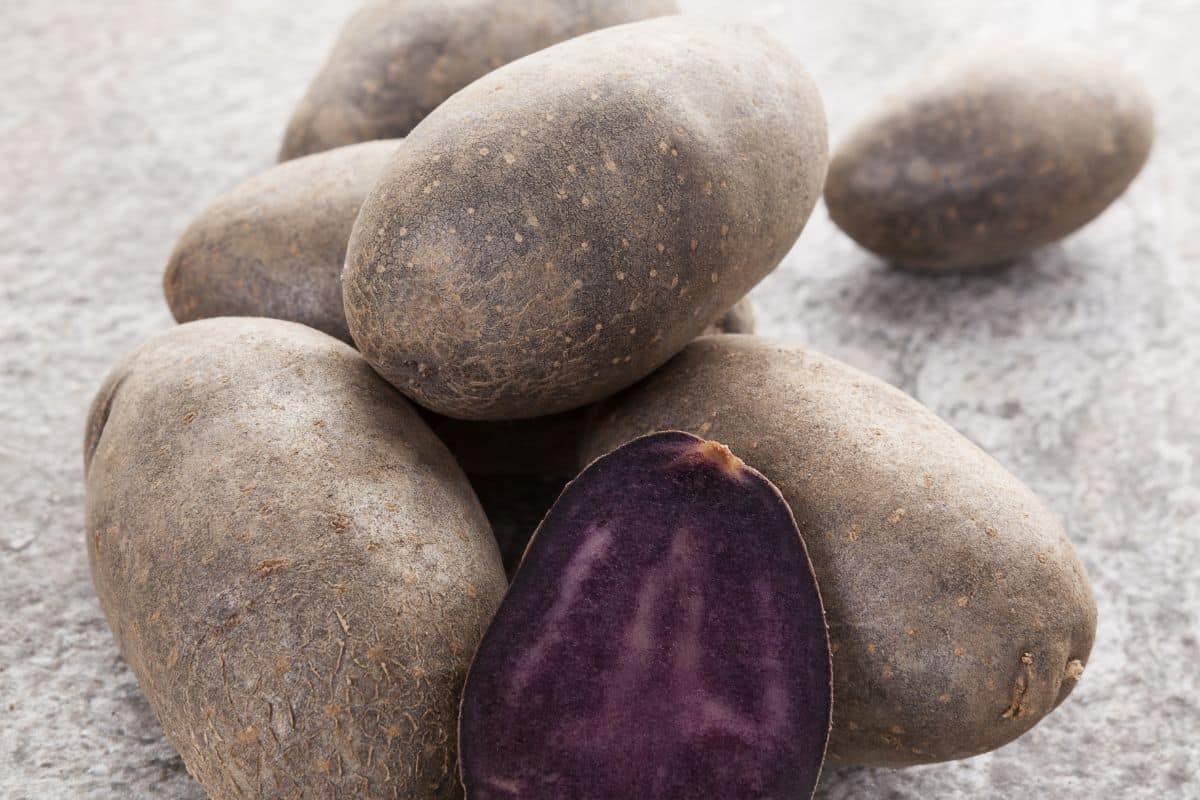
- Purple sweet potato is a lot like both taro and ube, however, its violet color is much more vivid than either of the others. It also has a flavor that is significantly sweeter than ube or taro, as it contains natural sugars which when cooked, will caramelize.
- This starch can be mashed, boiled, baked, or steamed like any other regular potato.
- Sweet potatoes are typically made into mochi in Japan, which, if you are unfamiliar with mochi, is a type of chewy rice cake.
Ube
- Ube is quite similar to taro in how it looks, and its texture, but it is significantly sweeter than taro. Ube is also much more vibrant in its purple due than taro.
- Ube is typically used in many baked goods like pastries and cakes, this is generally thanks to its color and sweetness.
- In the Philippines, Ube is mostly used to create ice cream or other dessert types, including halo-halo, which is a dessert made with shaved ice.
What Are The Benefits Of Ube?
Let’s take a look at some of the benefits that Ube has. If you choose to use this colorful and flavor-rich starch in your cooking, be sure to expect plenty of unique flavors but even more benefits to your health! What can it do for you?
Nutrient Density
Ube is very densely filled with essential minerals and vitamins. It contains high levels of vitamin C, which is very important in helping your body fight off disease. It also contains potassium, calcium, magnesium, and iron, all of which are good for your body.
Together, these nutrients can help your body keep your bones strong and keep your immune system boosted and healthy. As well as this, ube is also rich in dietary fibers. Dietary fibers can help your body’s digestion process and will make you feel fuller for longer.
This means that Ube can be a great starch vegetable choice for those who are on a diet, or who are trying to cut back on snacking!
Helping Heart Health
As well as being high in nutritional values, Ube has plenty of additional components that are highly beneficial for heart health as well. It contains monounsaturated fats which help to keep bad cholesterol levels low.
Meanwhile, it also has polyunsaturated fats that can help your body to improve circulation overall. Not only this, but it’s high potassium content can help to regulate your blood pressure levels.
Having high potassium can help your blood pressure levels stay in a healthier range, so for those who struggle with high blood pressure, Ube could help you to reduce potential heart attack and stroke risk over time!
Overall
Ube is used for its sweetness in many desserts in Asian cuisines. It is a delicious food type that has a rich nutritional profile. It is a versatile ingredient with sweetness and earthiness and a delicate hint of nuts that make it ideal for richness and flavor in all types of recipes.
It has become more and more popular in the US in recent years thanks to it having a vibrant purple hue when it is cooked. Its sweetness is also ideal as it is not too sweet, so it can hold off your sugar cravings!
It can be compared to taro root or purple sweet potatoes, as both of these share some similar flavors with this vegetable, however, they are not the same.
They all have their own differences, so choose between these carefully. If you simply fancy trying something new, ube is a great choice of root vegetable to try!
Frequently Asked Questions
Ube and Taro do indeed have some similarities in their flavors. However, ube is sweet and has some honey-like notes to it.
Ube also has a white chocolate-type taste and a slightly sweet flavor. But, that being said, these two starch vegetables are not completely identical in their flavors.
Ube, or as otherwise known, purple yams, are quite sweet. This sweetness is thanks to their sugar content, which is around 12 grams of sugar per serving!
Yet, the sweetness of this vegetable is balanced out by beneficial flavonoids which can help in promoting blood sugar control in people who may suffer from conditions such as type 2 diabetes and so on.
It is even possible that by eating Ube, you could satisfy your sweet tooth enough that you can stave off sugar cravings and keep your body even healthier by replacing sugary foods with Ube instead!
If you are looking to find some Ube, so you can start incorporating it into your diet, then the best places for you to find it will be at trusted online stores or local Asian supermarkets.
While some superstores may sell it, it is highly unlikely that you will find your local Walmart or H.E.B selling ube!
When you are looking for this delicious root vegetable, you should be on the lookout for a root vegetable that has dark brown skin that is a bit bark-like in its texture. Its flesh may be white with some purple flecks in it as well, or it might be a violet-lavender color all over.
Ube is pronounced as “OOH-BEH”. If you are in an Asian store and want to ask if they have any, the last thing we can imagine you want is to mispronounce it, as you want to ensure you are getting exactly the item you are looking for.
Remember that the ‘U’ makes an ‘OOH’ sound. This work is the Filipino word for a purple yam, you may be able to refer to it as a purple yam, however, in most Asian markets it will be called ‘Ube’.


